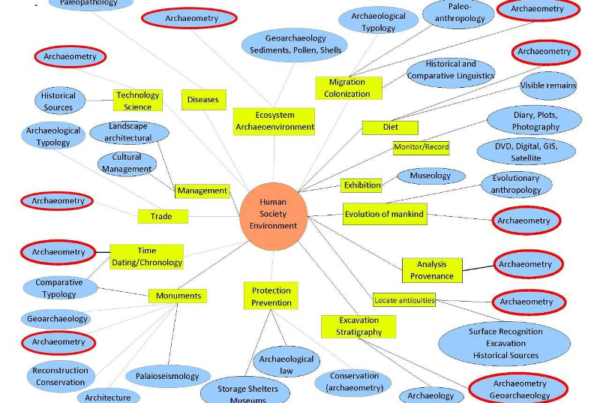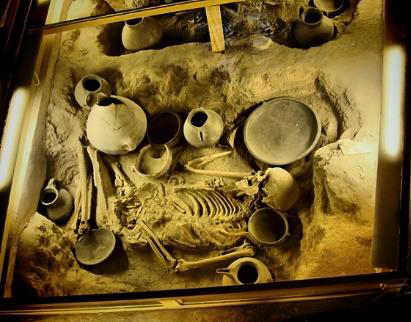By Hala A.M. Afifi, Rushdya Rabee Ali Hassan, Mustafa A. Abd-EL-Fattah and Shimaa M. Menofy
ABSTRACT
The present study was applied on an archaeological cartonnage piece from lisht site to identify the chemical composition of the cartonnage materials and the damage forms that were resulted from buried soil. The ex-amination process was implemented via the sampling techniques using Scanning electron microscope (SEM-EDS), X-ray diffraction (XRD) and Fourier transform infrared spectroscopy (FTIR). The results showed that the Egyptian blue (cuprorivaite), Egyptian green and red ocher were used as the pigment layer. The linen was used as a textile layer and calcium carbonate (calcite) as the preparation layer. The gum Arabic used as an organic media which was used in all layers as a binder of the cartonnage component. These materials suf-fered from the effect of surrounding environmental conditions in lisht especially the effect of diversity in the air temperature that was influenced the object tensile strength and caused a general weakness of all layers. It also caused shrinkage and wrinkle to the textile layer. Microbiological tests were performed for two swabs from the pigment layer and the textile layer to identify the bacteria and fungi species which affected the car-tonnage material. Burkholderia Sp. was identified on the red pigment surfaces and the textile layer. Burkholderia Sp., bacteria species usually convert cellulose and hemicelluloses polysaccharides into a sac-charified solution containing mixed sugars that used as a carbon source. This process plays a role in promot-ing The microbiological damage Which damages the organic material properties and caused the surface staining.
![]()



